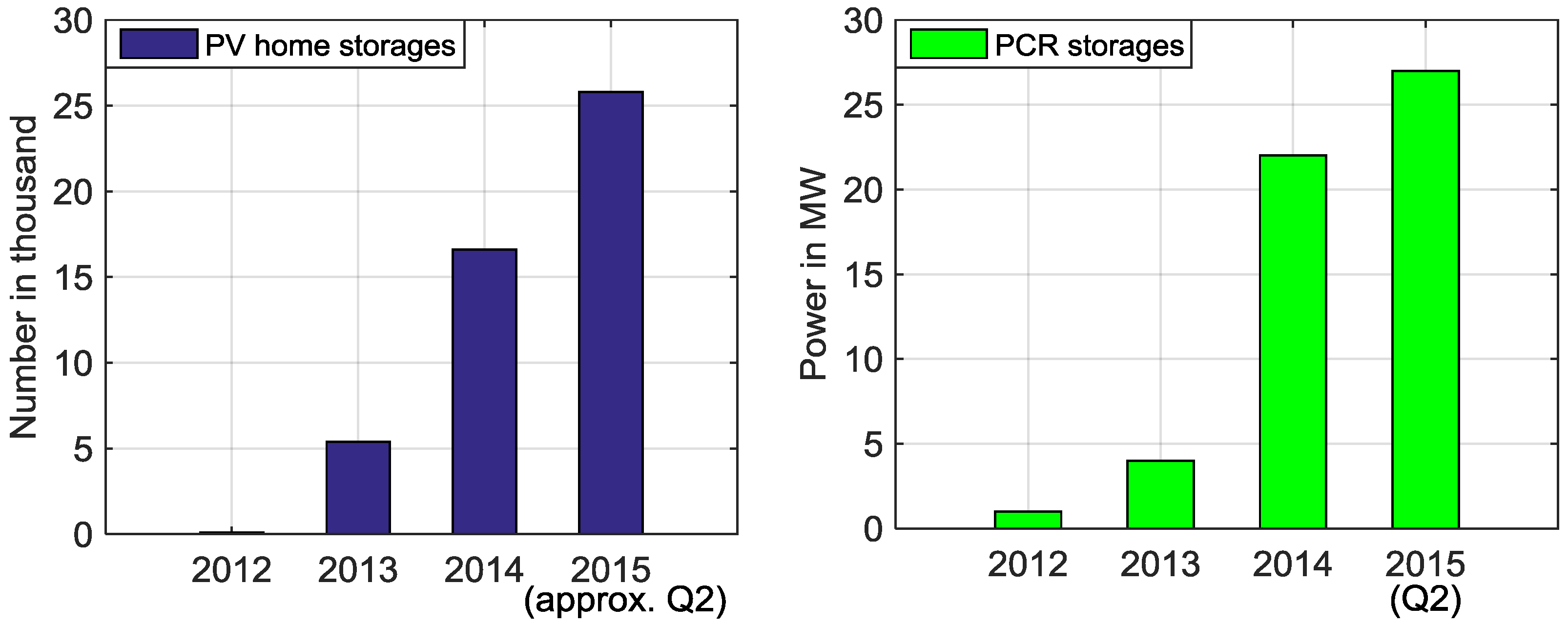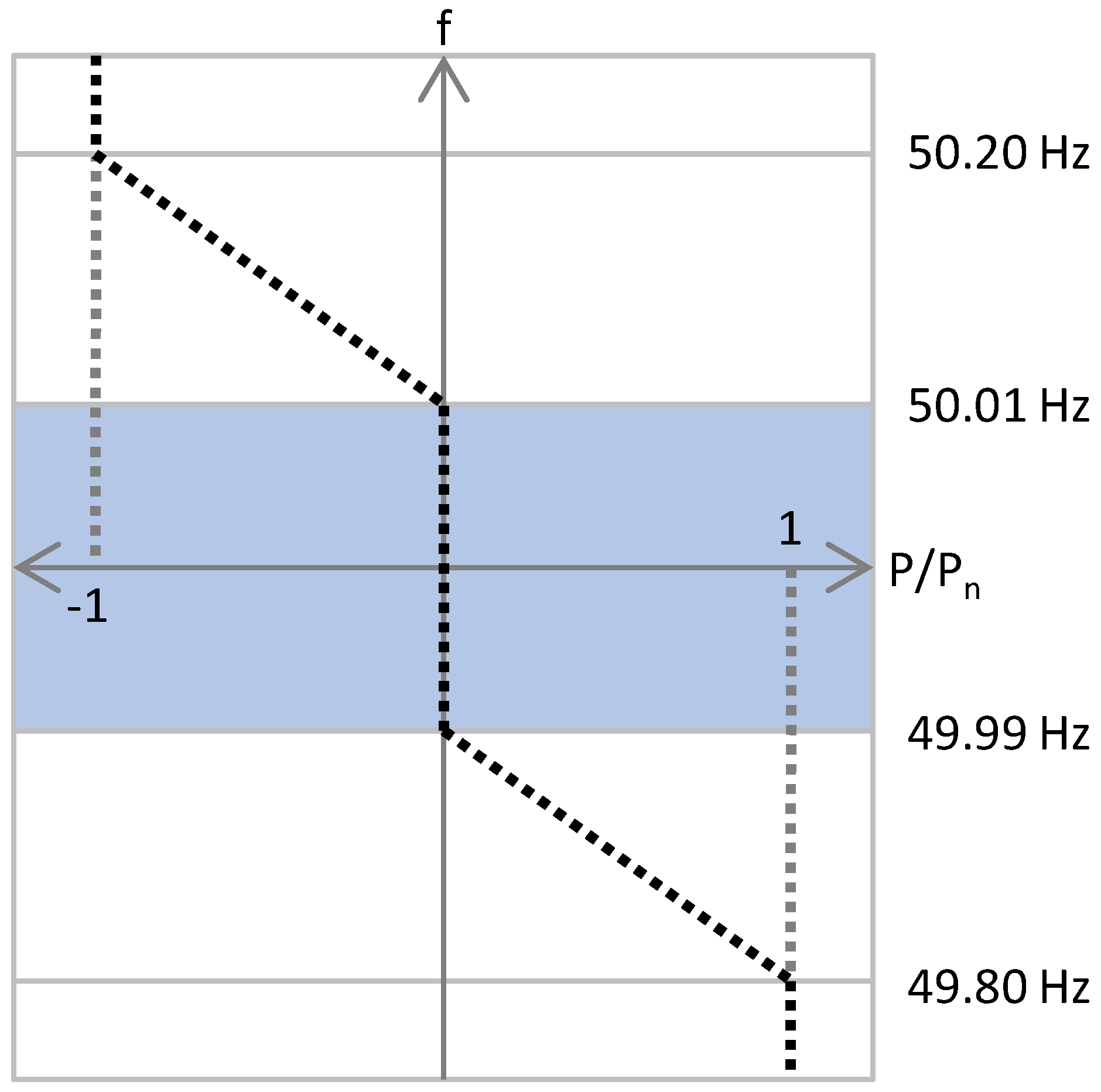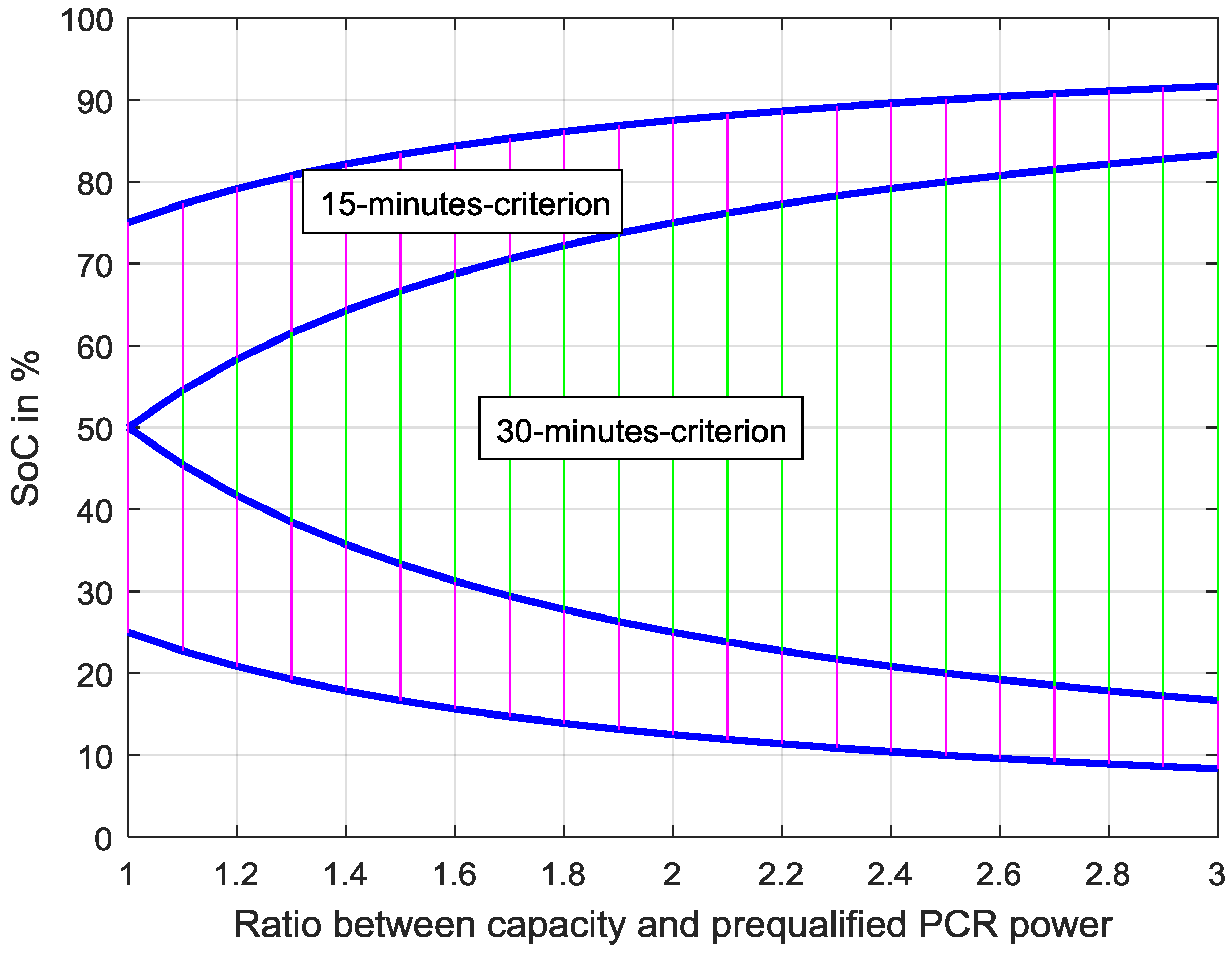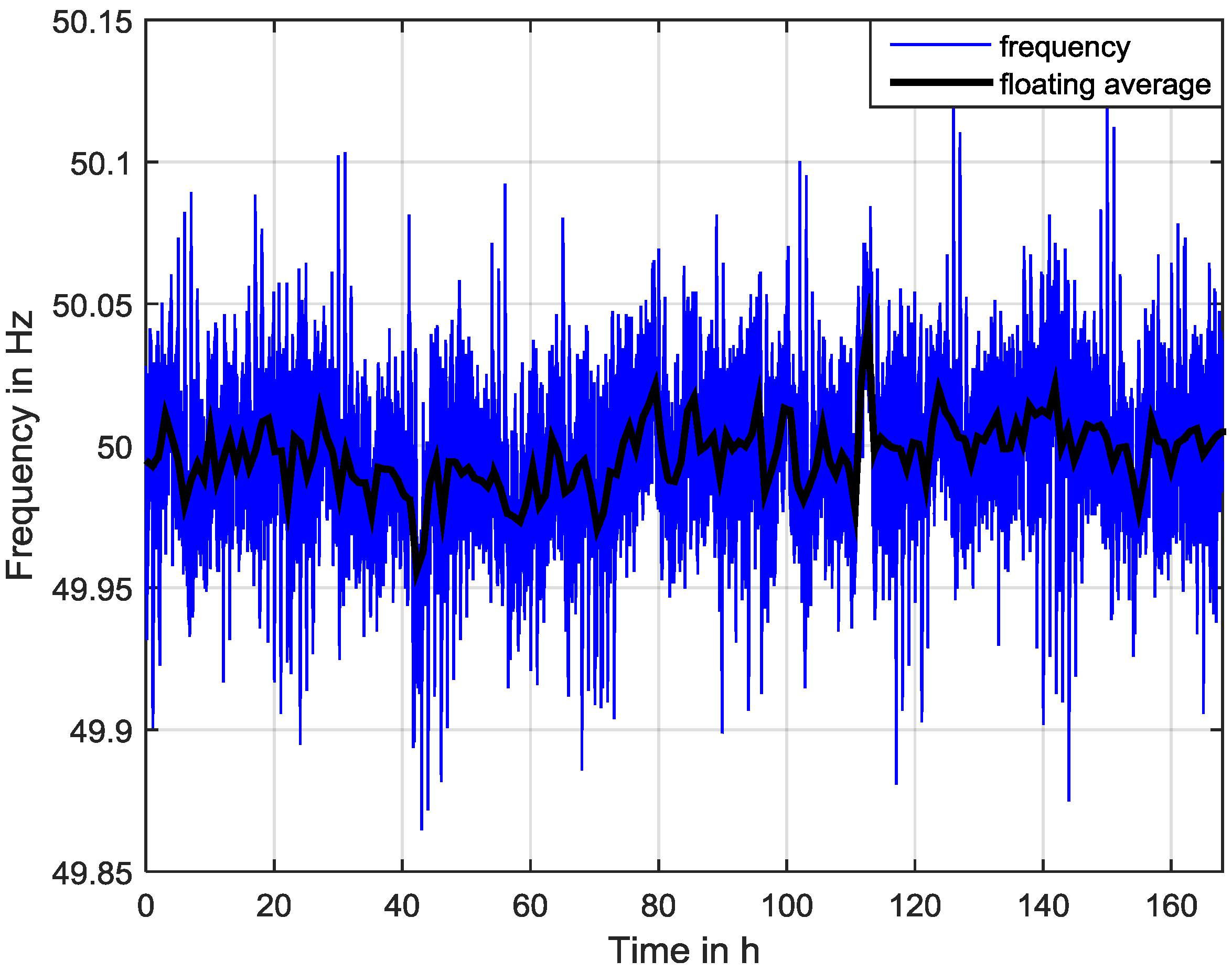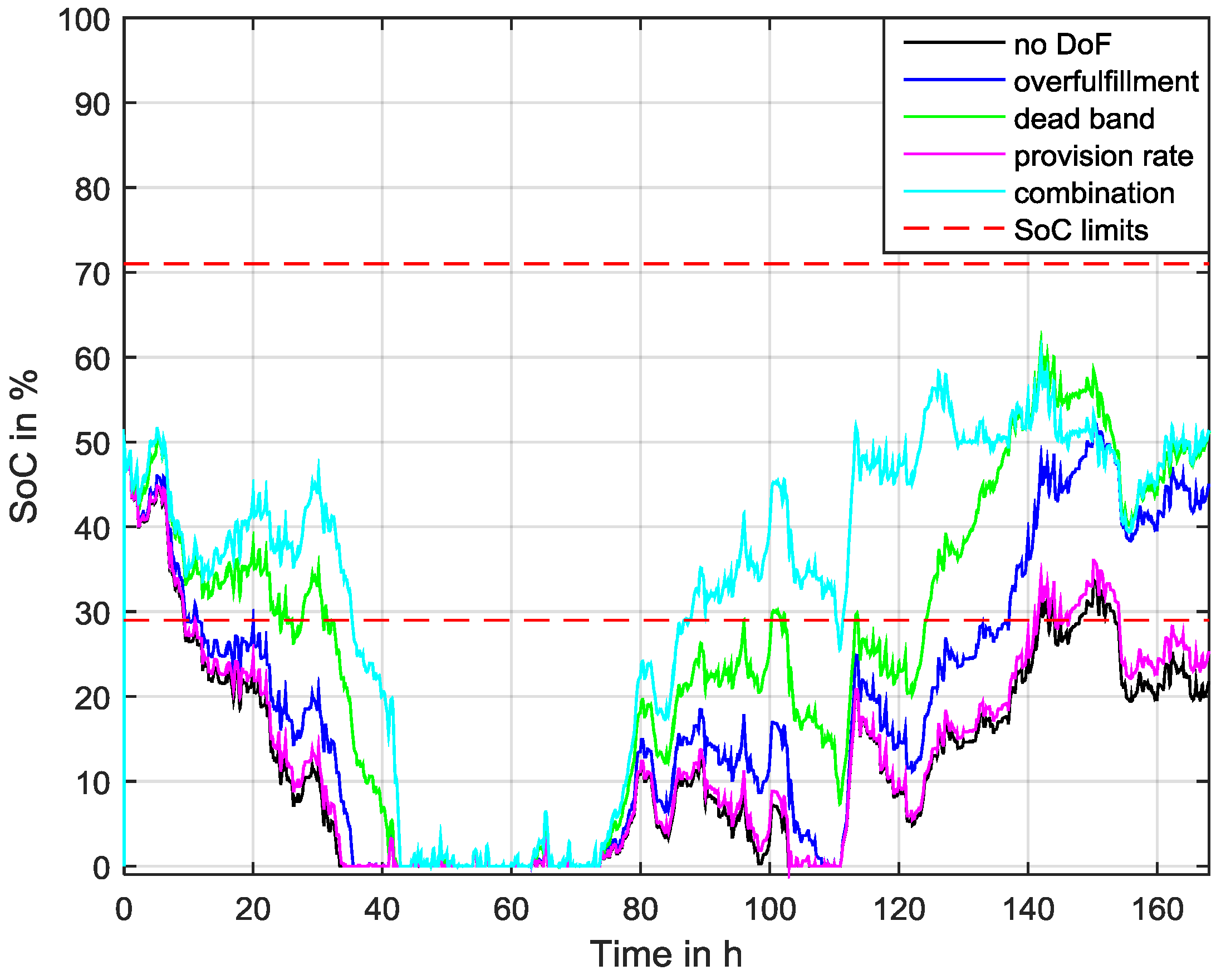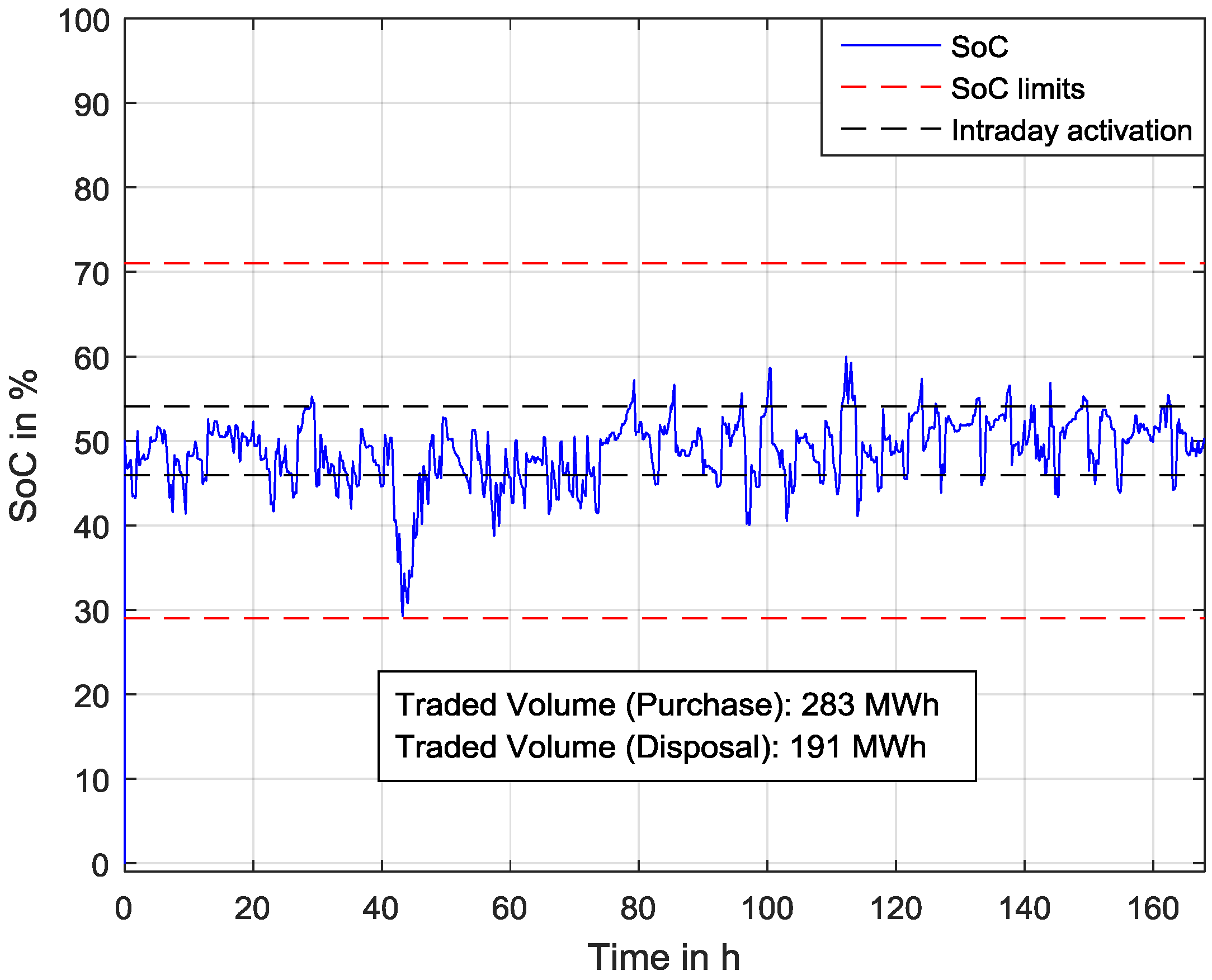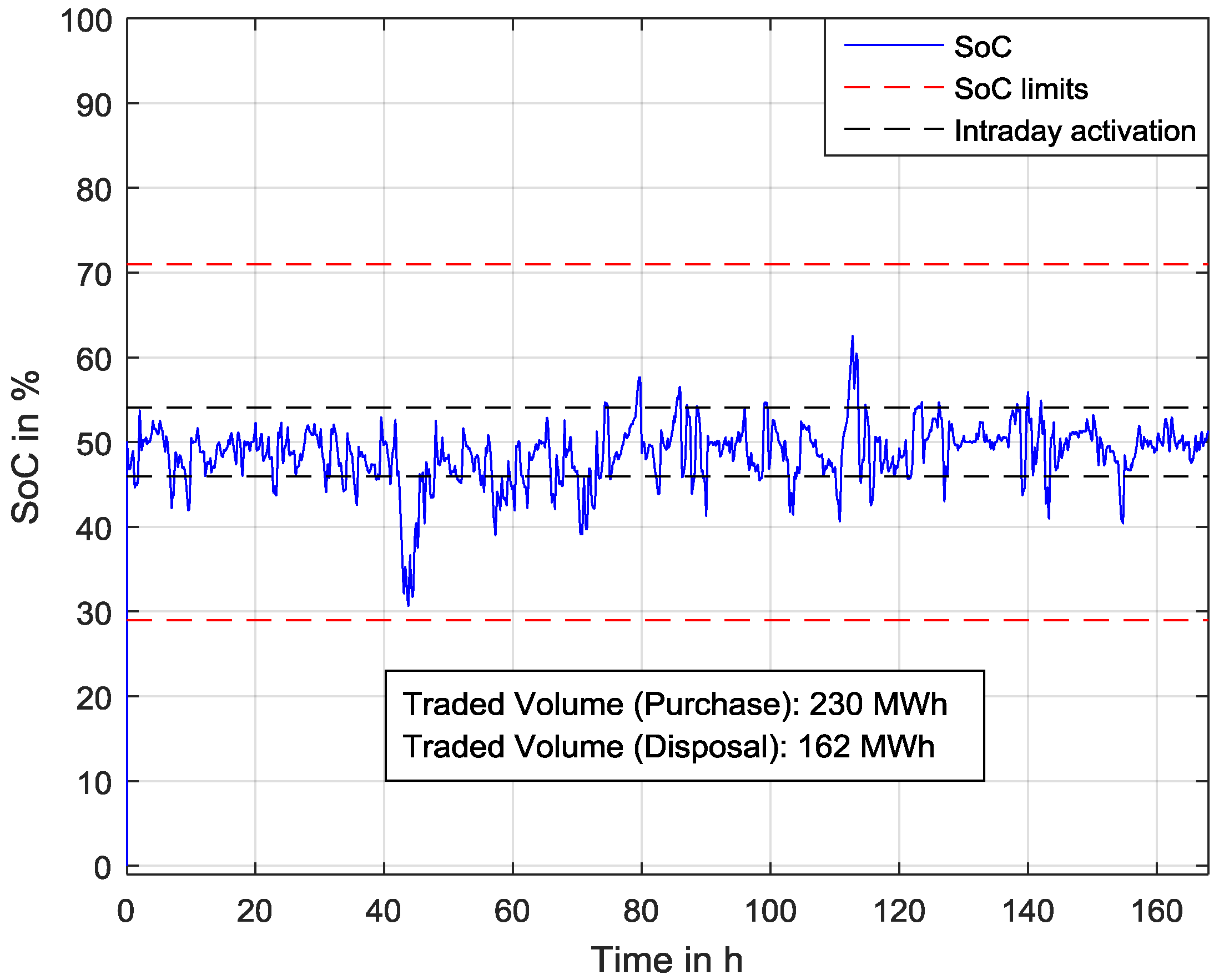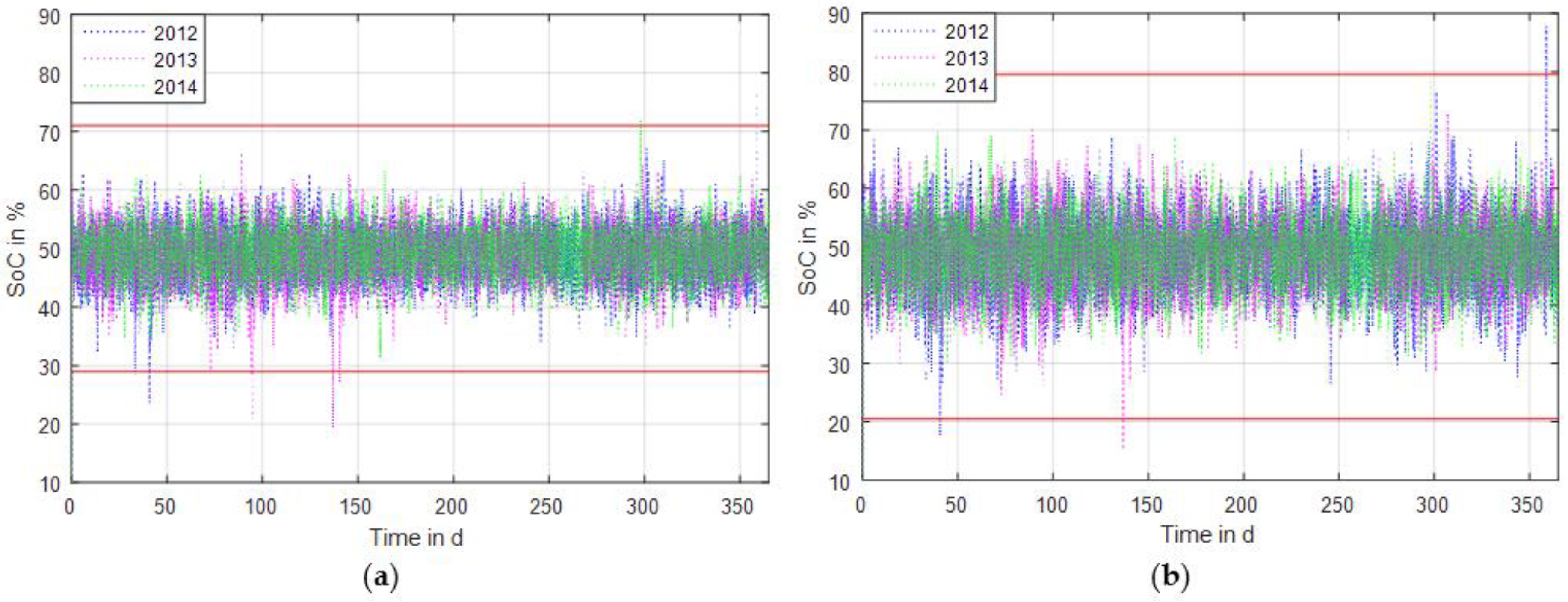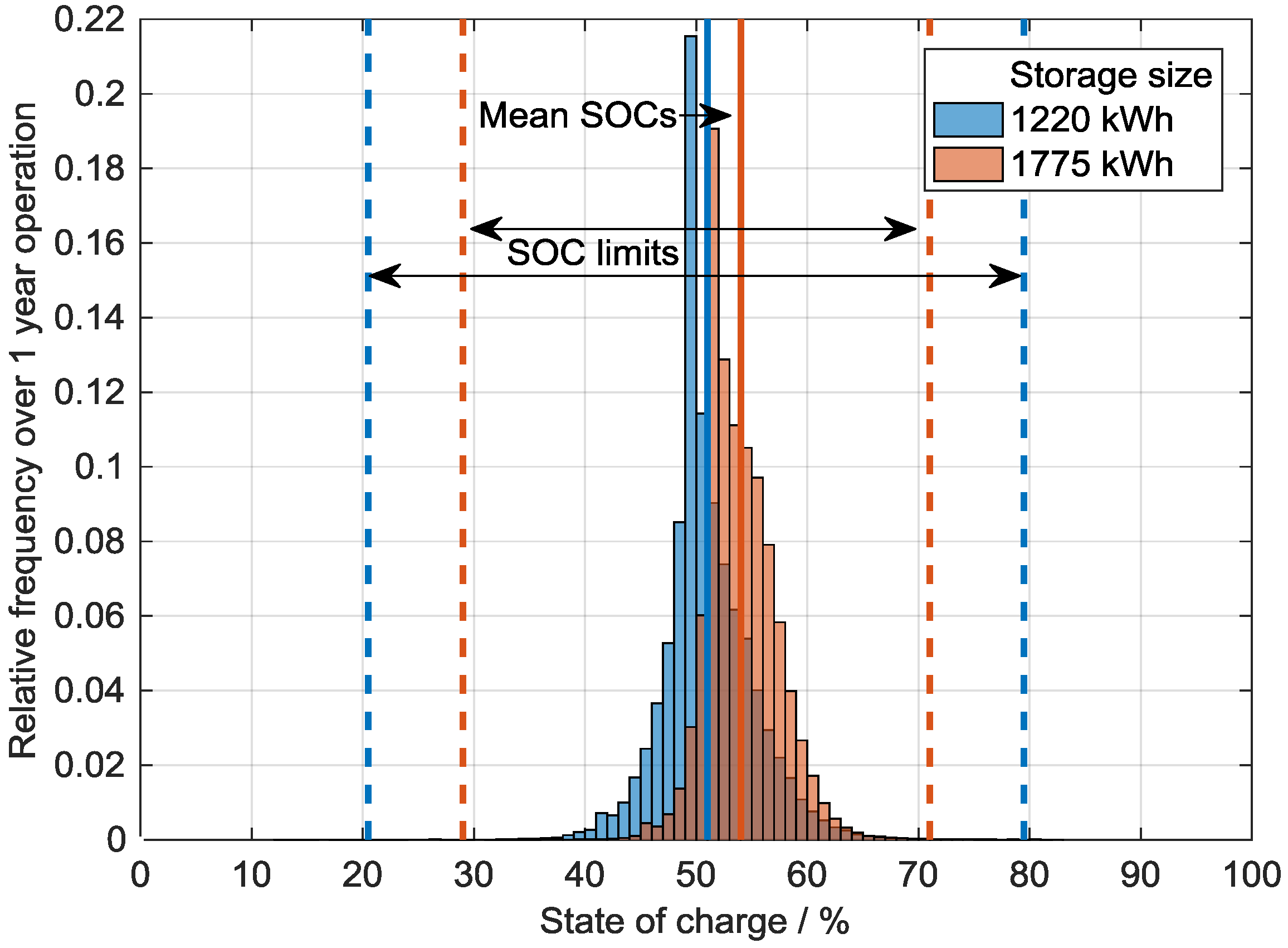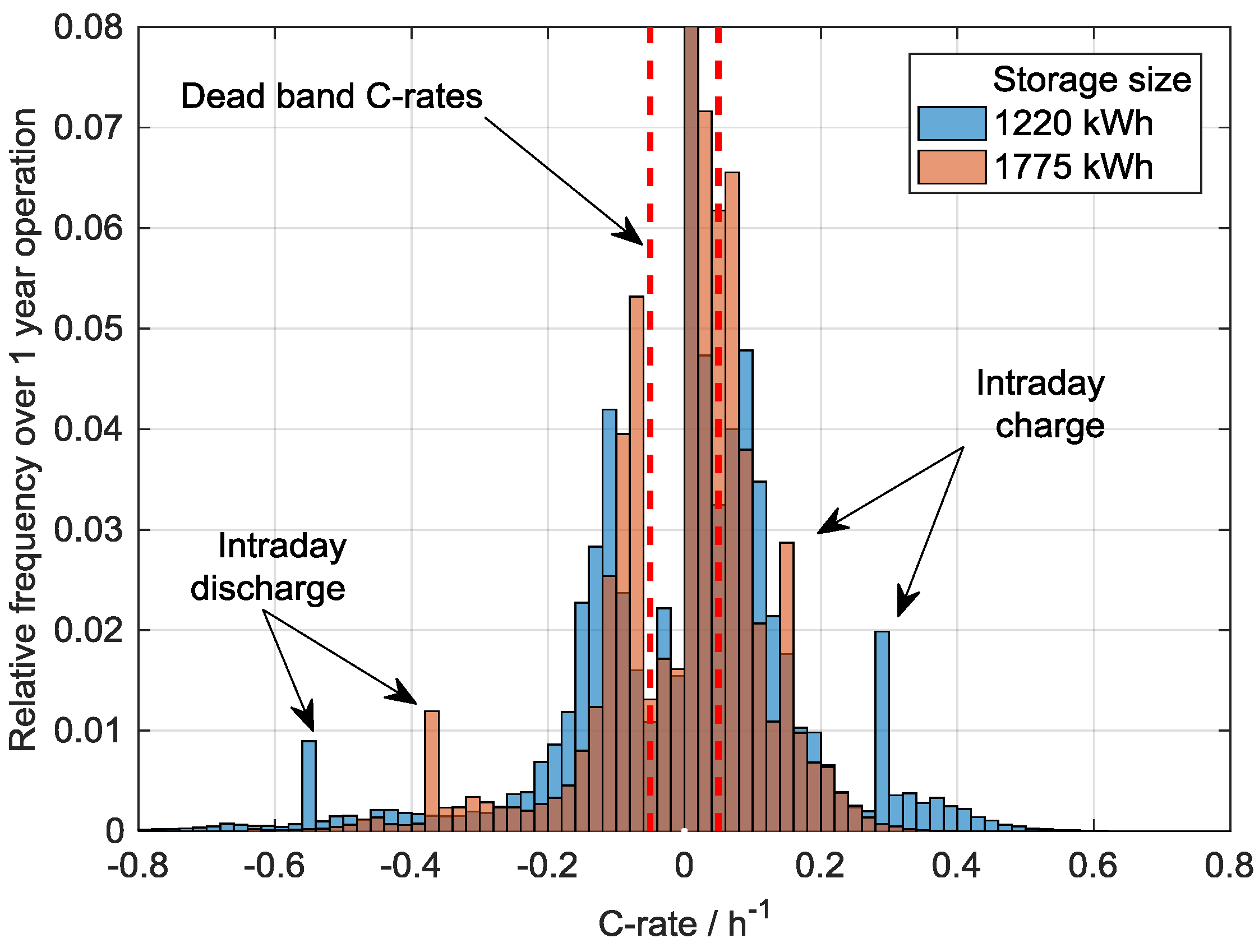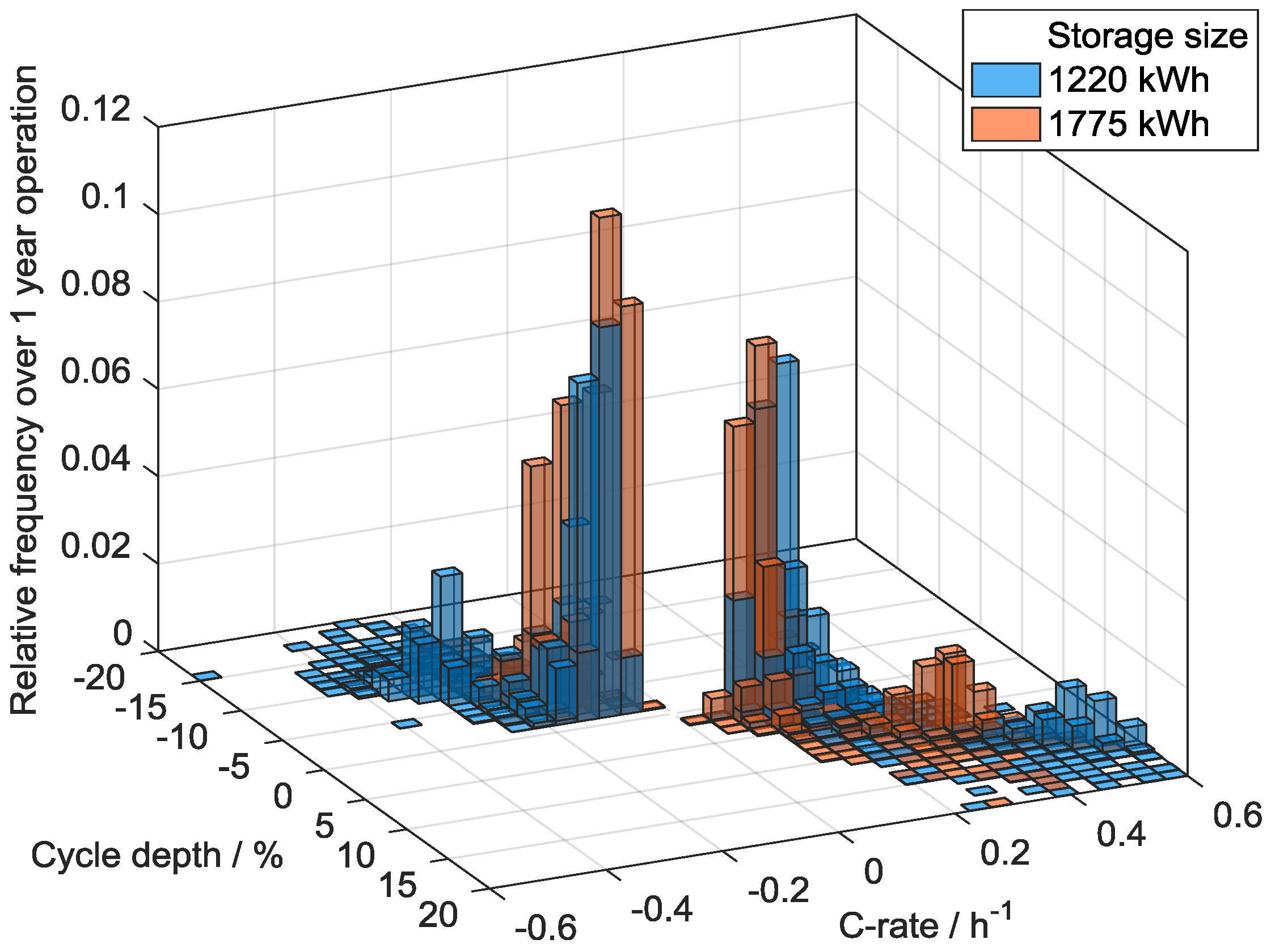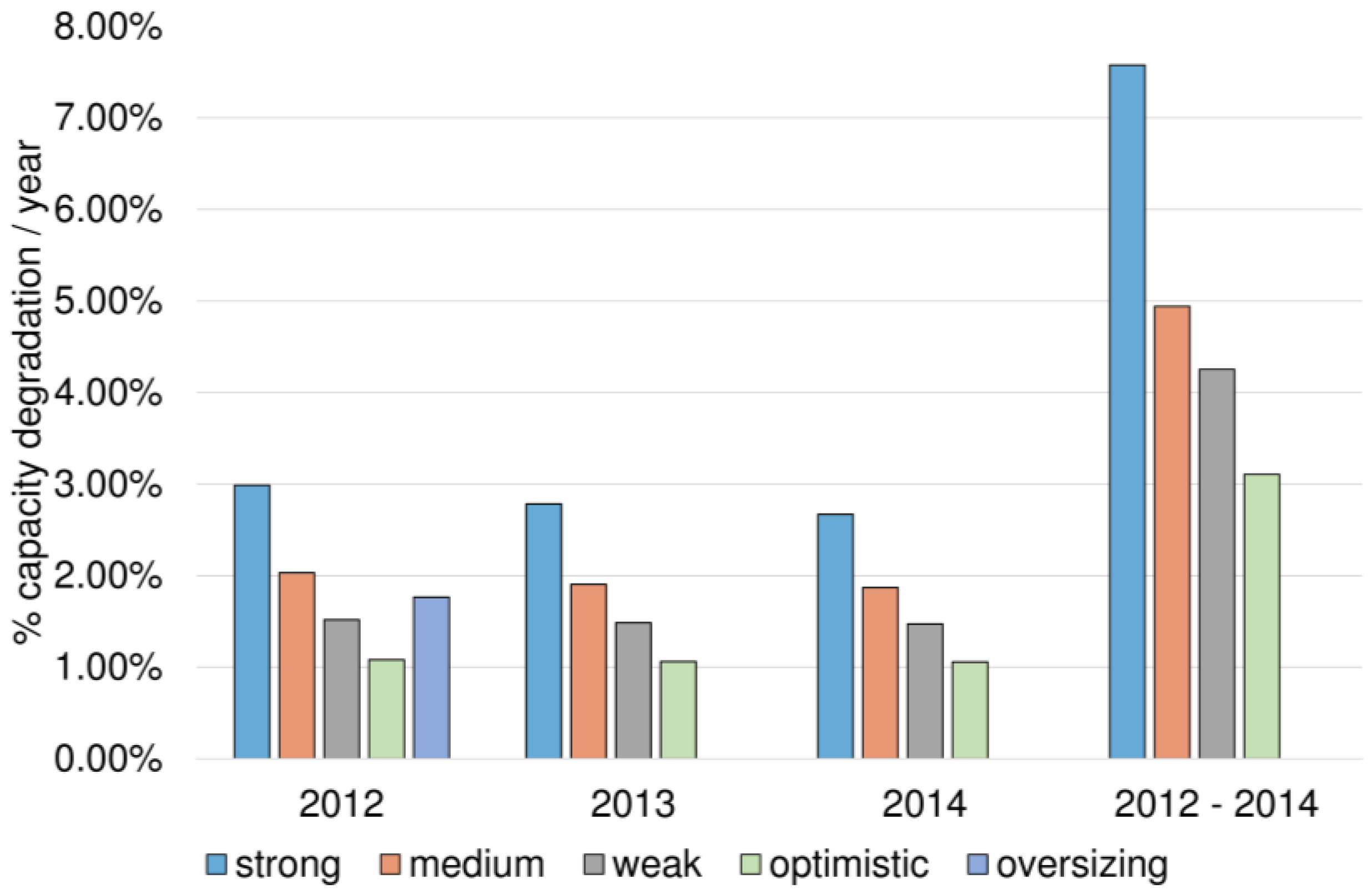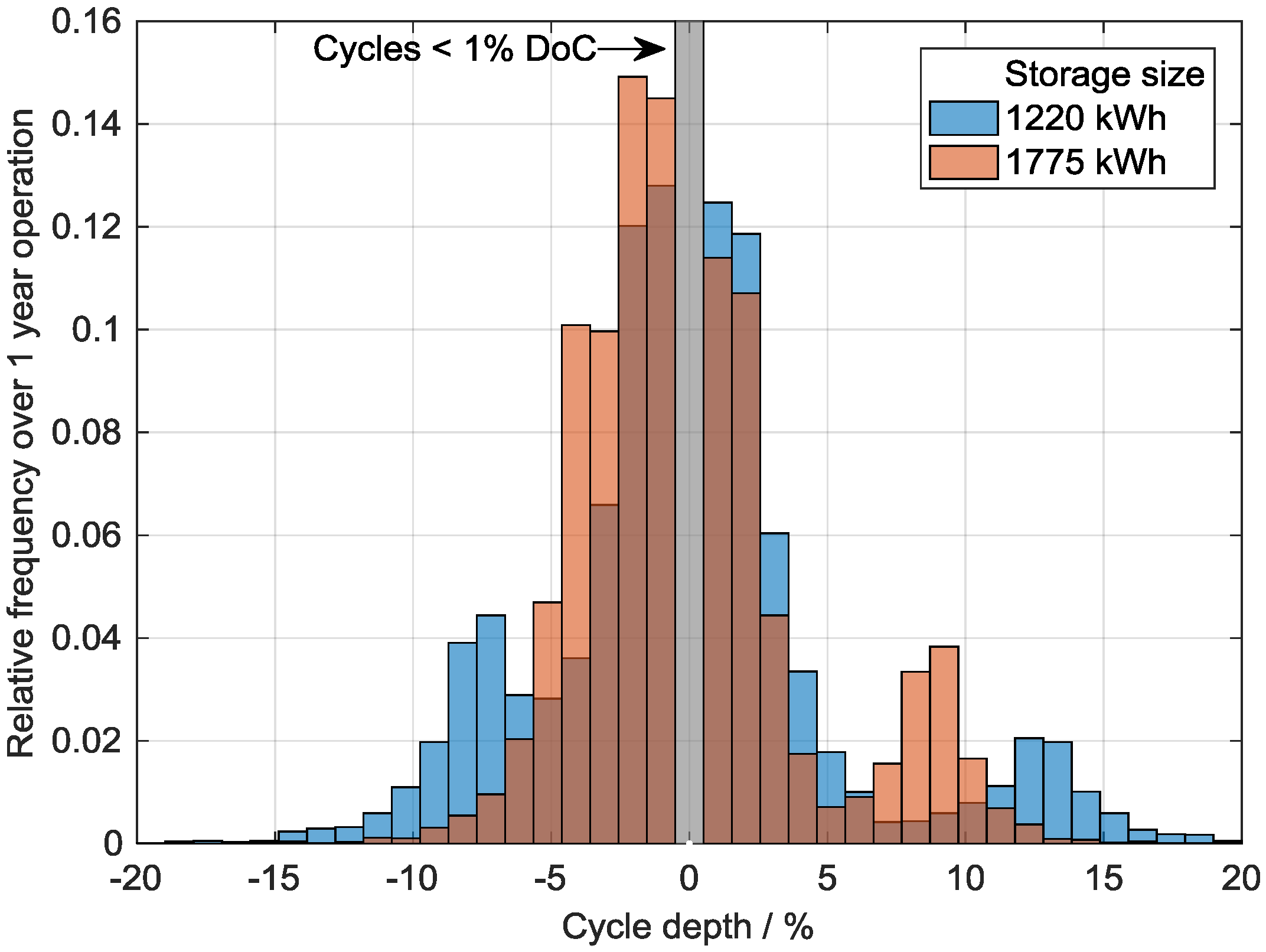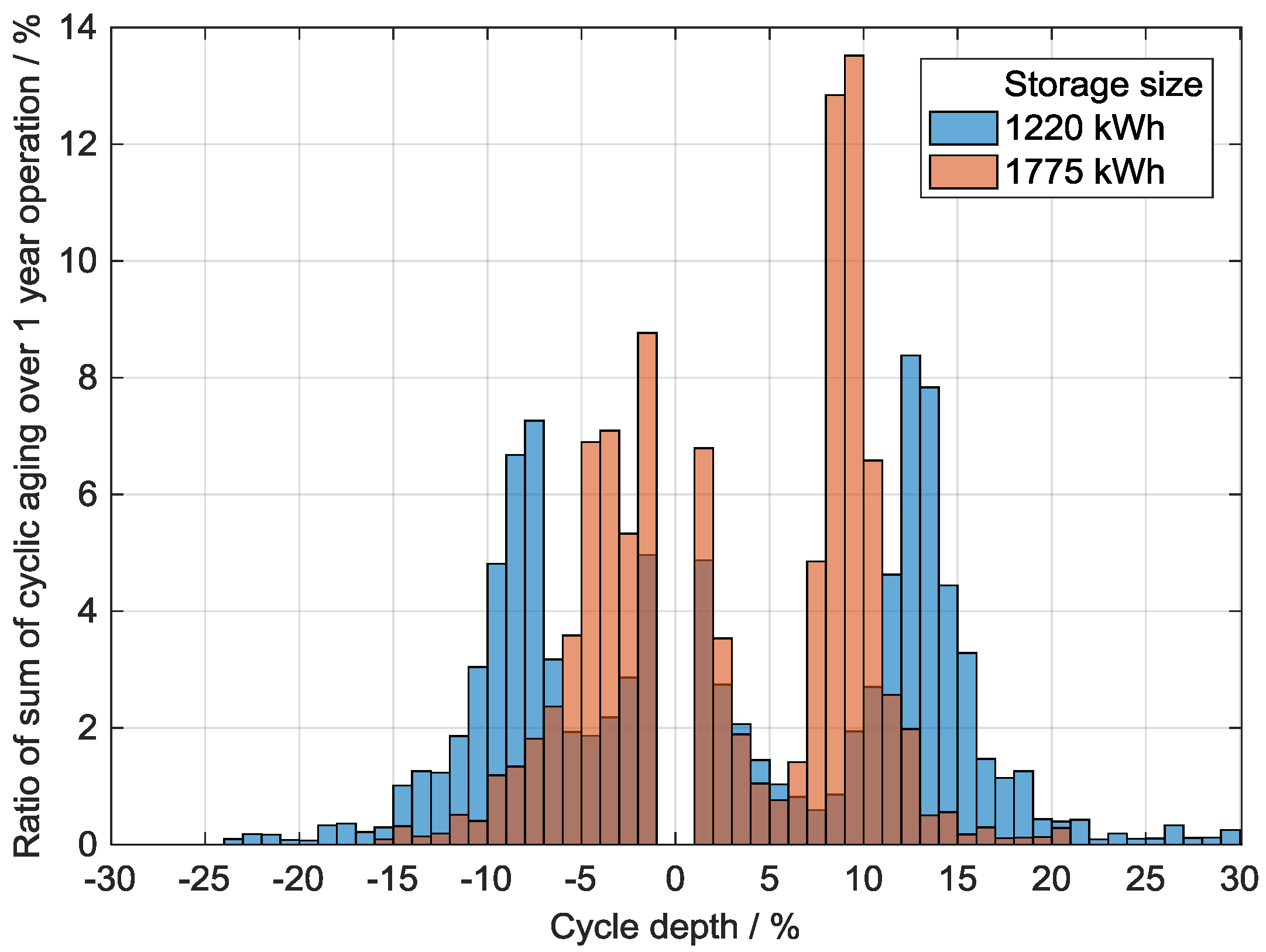7.2. Aging Impact
To reduce any potential precision loss for the final calculations and results, battery aging was considered as described in
Section 5.7.2. Therefore, the aging model estimated the influence of the simulated capacity of the BESS on the overall performance. Based on the cycle-counting approaches found in [
11], we identified five different parameter sets, defined as scenarios, for the aging model:
| Scenario 1—medium aging | Literature-dependent setup with a degradation to 80% SoH after 5000 cycles and a calendric lifetime of 15 years. |
| Scenario 2—weak aging | A weak aging approach where 80% SoH is reached after 6000 full cycles with a calendric lifetime of 15 years. |
| Scenario 3—strong aging | A strong aging approach where 80% SoH is reached after 3000 full cycles with a calendric lifetime of 12.5 years. |
| Scenario 4—optimistic aging | An optimistic aging approach where 80% SoH is reached after 14,000 full cycles with a calendric lifetime of 20 years. |
| Scenario 5—oversizing | A different optimistic approach where parameter setup 1 is facilitated by oversizing the battery by a factor of 1.5, resulting in a power rating of 1.66 MW and an energy content of 2.62 MWh while the offered PCR power remains the same. |
Table 10 gives comprehensive information on the variations in our simulation setup and our results in terms of the criteria, BESS power, BESS energy, the frequency data year used, and aging models. For easier access to the information, we added capacity degradation resulting from calendric and cyclic aging to the table, and the aging scenarios are given in the text immediately above.
The aging data given in
Table 10 represents the total loss in capacity from the initial capacity at the simulation start. From our data, we concluded that BESS sizing has a strong influence on the aging effects. The literatures [
11,
15,
16] show that BESS aging is derived from several factors, e.g., the
DoC, mean value of the
SoC, and the
C rate, among others.
Figure 12 depicts the BESS size and total aging of the BESS drawn from data from the years 2012 to 2014 and a three-year simulation using a mean value for all aging scenarios. Because of the larger BESS capacity, the
DoCs decrease, resulting in less capacity fading and smaller absolute values for the
C rates. Both the yearly and three-year simulations show the same behavior.
When the aging behavior is separated into calendric and cyclic aging effects, another result is visible. Calendric aging occurs at any time, regardless of the
C rate, the
DoC, or other factors. However, cyclic aging depends on the
DoC, the initial mean
SoC of a cycle, and the
C rate, among other factors.
Figure 13 depicts BESS setups with different power-to-energy (
P/
E) ratios and the resulting aging appearance. Calendric aging is similar in all three setups.
Whereas calendric aging shows no influence on the
P/
E ratio, cyclic aging has a different aging behavior. As described above, deeper cycles result in more extensive aging [
11,
15]. Hence, for the same power (1 MW), a larger BESS (1.77 MWh) has a decrease in aging compared to a smaller BESS (1.22 MWh) when the same load is applied. However, this relationship does not hold when the BESS power is adjusted non-linearly (1.6 MW) with the BESS capacity (2.66 MWh). An increase in aging is observed, and it is related to deeper cycles and higher
C rates than the other setups.
Comparing the overall results in terms of the scenario definition, a few specific tendencies were observed. First, an increase in the cyclic or calendric lifetime leads to a decrease in aging. Second, the cyclic life and calendric lifetime are not linearly correlated to the BESS aging.
Figure 14 shows that for the 2012 data, heavy-duty aging (3000 cycles to EoL) results in a total aging of 3%. However, our optimistic scenario (14,000 cycles to EoL) results in only 1% aging. This difference is explained by the differences in cycle and calendric aging. When the cycle life is very weak, each equivalent full cycle has a significant impact on the overall aging processes. However, a high cycle life results in a decrease in cyclic aging, and only calendric aging is observed.
In addition,
Figure 13 shows the effects of oversizing a storage system. In 2012, simulations were performed with a system oversized by a factor of 1.6, applying the same load used for all other systems. A decrease in aging from 3% to 1.8% was observed. Since the overall
P/
E ratio changed, the aging decrease does not correlate with only the BESS capacity. Therefore, an oversized system is not, in general, suitable for increasing the lifetime. A better cell quality, which is more expensive but has a higher lifetime expectancy, solves this problem.
Figure 15 and
Figure 16 allow a closer look at the aging characteristics for operation of the two storage system sizes, 1220 kWh and 1775 kWh, according to the 15-min and 30-min criteria. In
Figure 15, the probability distribution of the cycle depths (
DoC) is shown for one year of operation assuming the 2012 frequency data. Cycles with |
DoCs| < 1% occur very often and are neglected in the probability distribution because of their insignificant impact on cyclic aging. We can see that cycles with |
DoCs| < 15% in discharge and |
DoCs| < 20% in the charge direction were most often detected. Comparing the two storage system sizes, we observed different peaks among the
DoCs because of the different operation modes of the 15-min and 30-min criteria.
Using the probability distribution of the
DoCs, we calculated the specific impact on the cyclic aging, which is represented in
Figure 16. In this figure, we see the ratio of the particular cyclic aging related to the overall cyclic aging for each
DoC after one year of operation. Again, |
DoCs| < 1% were neglected because of their small effect on cyclic aging. As explained in
Section 5.7.2, smaller
DoCs result in less cyclic aging and capacity degradation than larger
DoCs, which is also observed in this figure. The impact of the
DoCs near 10% is nearly the same as that of the |
DoCs| < 5%, although the cycles with
DoC < 5% occur more often than the larger cycles. Nevertheless, in this storage application, the cyclic aging appears much smaller than in other applications such as residential PV storage [
11], where we observe larger
DoCs that result in significant cyclic aging.
